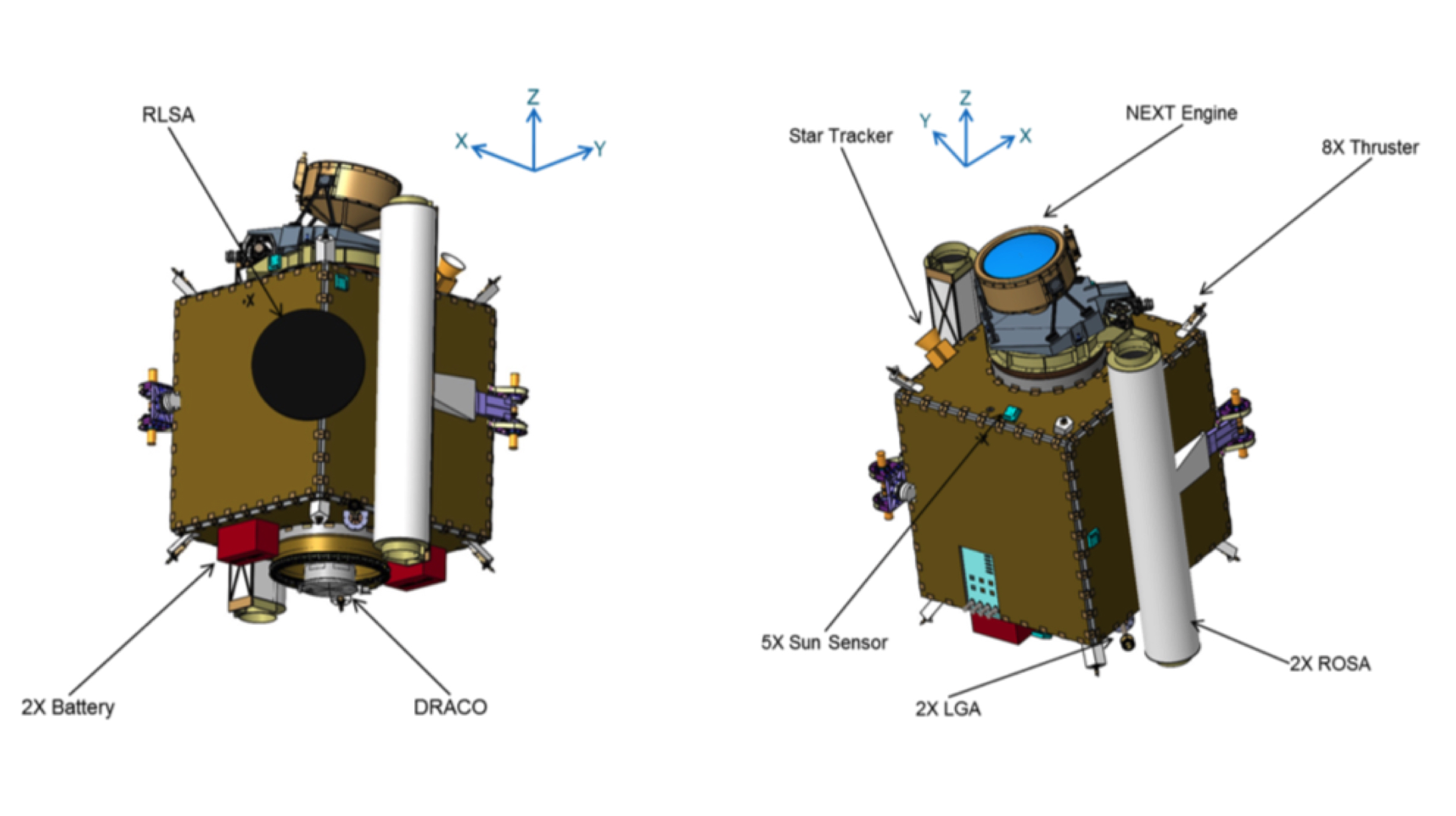National Aeronautics and Space Administration (Nasa) is planning to launch a spacecraft aboard a SpaceX Falcon 9 rocket that will hit a small moonlet in the binary asteroid system Didymos in September 2022. For those who are unaware, a moonlet is a small moon whereas a binary asteroid system is a system of two asteroids orbiting their common barycentre while the barycentre is the centre of mass of two or more bodies that are orbiting each other which is the point around which they both orbit.
The Double Asteroid Redirection Test (DART) will get one chance to hit its target, a small moonlet in the binary asteroid system Didymos. The asteroid poses no threat to Earth, NASA said in a statement.
This will be done in order to demonstrate a planetary defense technique and is scheduled to be launched in mid-2021. By using solar electric propulsion, DART will intercept the target when the asteroid will be within 11 million km of Earth.
NASA DART Mission

To navigate the DART spacecraft to its intended target — a binary asteroid that consists of a small moon (Didymos B) orbiting a larger body (Didymos A) — scientists need to understand how the system behaves.
Scientists have been making efforts to observe Didymos from Earth since 2015. Observations will help researchers to better understand the extent of the impact made when DART slams into its target — Didymos B — in September 2022.
“The Didymos system is too small and too far to be seen as anything more than a point of light, but we can get the data we need by measuring the brightness of that point of light, which changes as Didymos A rotates and Didymos B orbits,” said Andy Rivkin, DART investigation team co-lead.
The investigation team will observe Didymos again from late 2020 into the spring of 2021. Final ground-based observations will occur as the spacecraft travels toward the asteroid, as well as after impact occurs.
The total cost for Nasa to launch DART is approximately $69 million, which includes the launch service and other mission-related costs.







